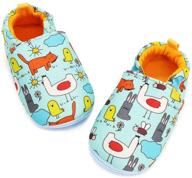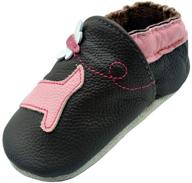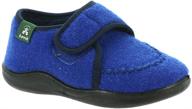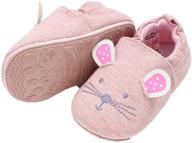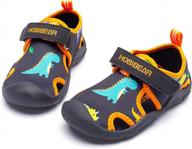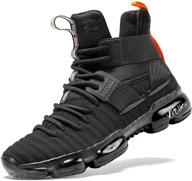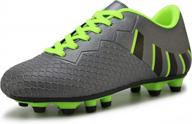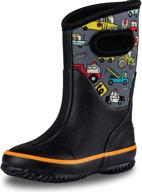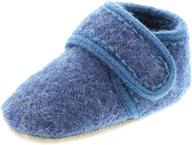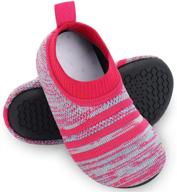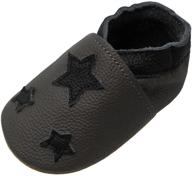How to choose the right size slippers for your child?
Choosing the right size slippers for your child is important for comfort and safety. Slippers that are too small can be uncomfortable and cause blisters, while slippers that are too big can slide off easily and cause tripping hazards.
Measure Feet
The first step is to properly measure your child's feet. Here's how:
- Have your child stand on a flat surface with weight distributed evenly on both feet
- Place a ruler flat against the wall and have your child stand with heels against the wall
- Mark the furthest point of the longest toe with a pencil
- Measure from the pencil mark to the wall to get the foot length
Measure both feet since they may be slightly different sizes. For accuracy, repeat 2-3 times and use the largest measurement.
Use a Size Chart
Once you have the foot measurements, consult a size chart from the slipper manufacturer to find the recommended size. Children's sizes differ across brands, so be sure to check the specific chart. Here's a general size chart for kids:
| Foot Length | Shoe Size |
|---|---|
| 4 - 5 inches | Newborn - 3 months |
| 5 - 6 inches | 3 - 6 months |
| 6 - 7 inches | 6 - 12 months |
| 7 - 8 inches | 12 - 18 months |
Try on Slippers
It's always best to have your child try on the slippers for best fit. There should be about a thumb's width of space between the longest toe and the end of the slipper. The slippers should feel snug but not tight.
Choosing well-fitting slippers will keep your child's feet comfortable and safe. Measure carefully, use size charts, and test out slippers before purchasing to find the perfect pair.
Top products in 👣 Boys' Slippers
How to Clean Fur Lined Slippers?
Fur lined slippers are soft and cozy, but can easily get dirty from everyday wear. Here are some tips on how to clean them and keep them looking fluffy and new.
Read the Label
Check the care label first. This will tell you if the slippers are machine washable or must be hand washed.
Remove Debris
Before washing, remove any loose debris or dirt particles. Turn the slippers inside out and gently brush or shake out any crumbs or dust. This prevents debris from getting lodged in the fibers during washing.
Wash by Hand
Many fur lined slippers need gentle hand washing. Fill a sink or tub with cool water and a small amount of mild detergent. Allow slippers to soak for 15 minutes, then gently swish them around.
Don't scrub or twist the slippers as this can mat the fur. The motion of the water should be enough to loosen dirt.
Another interesting products
Rinse and Dry
- Rinse the slippers thoroughly with cool clean water to remove all soap.
- Gently squeeze out excess water, but don't wring or twist.
- Stuff with paper towels to absorb moisture, change towels as needed.
- Allow to air dry completely before wearing again.
Tip: Avoid using heat to dry fur lined slippers as it can damage the fur fibers or cause shrinkage.
Similar products
Refresh Fur
Once fully dry, use a soft brush or garment shaver to refresh the texture of the fur. Gently brush against the natural nap to fluff up the lining.
With proper care, fur lined slippers can stay soft and plush for many seasons. Handle them with care while washing, avoid heat, and brush periodically to keep fur looking its best.
How to Prevent Kids' Slippers from Falling Off?
It can be frustrating when kids' slippers keep slipping off their feet. Loose fitting slippers present tripping hazards. Here are some tips to keep your child's slippers snugly on their feet:
Get the Right Size
Ill-fitting slippers are the #1 reason they fall off. When sizing:
- Measure feet and refer to size charts
- Allow a little growing room but don't go too big
- Try slippers on with socks for most accurate fit
Look for Adjustable Fasteners
Many kids' slippers come with adjustable closures to help secure the fit such as:
- Hook-and-loop straps
- Elastic or adjustable ankle straps
- Toggle or button closures
- Zippered backs
Adjust and fasten straps snugly so slippers stay on without being too tight.
Add Grips
Adding textured grips can create friction to prevent sliding. Options include:
- Applying puffy fabric paint on the soles
- Attaching adhesive traction dots
- Cutting pieces of shelf liner and gluing inside
Focus on the heel and ball of the foot area when applying grips.
Wear with Socks
Wearing socks under slippers creates a tighter fit so they stay on better. Thicker socks work best.
Check Fit Frequently
As kids’ feet grow, check the slipper fit often. Let out straps as needed and size up when toes start hitting the end.
With the right fit, fasteners, and grips, you can keep your child’s slippers on for safety and warmth.
How to Make Sure Slippers are Nonslip?
Slippery slippers can lead to dangerous falls and accidents. Here are tips to ensure your slippers provide traction and stability:
Examine the Sole
The sole material greatly impacts slip resistance. Best options include:
- Rubber - provides grip on most surfaces
- Latex - grips well and conforms to floors
- Microfiber - lightweight and prevents slides
Avoid plastic or smooth leather soles which tend to be slippery.
Check for Tread
Slippers with deeper tread patterns improve traction by channelling water and debris away. Herringbone and waffle style treads work well. The tread should cover the entire sole.
Add Gripping Pads
You can modify slippers to make them safer:
- Attach adhesive gripper pads
- Apply puff paint in a dotted pattern
- Glue pieces of abrasive sandpaper
Focus on high pressure points like heels, balls of feet, and toes.
Use Indoor Only
Slippers lack the heavy tread required for outdoor use. Wearing them outside causes premature wear, reducing traction. Use designated outdoor shoes instead.
Replace Regularly
Inspect slipper soles often. Look for wearing down and smooth areas which indicate losing grip. Replace immediately if soles are worn through or appear slippery.
Proper materials, tread, and maintenance will ensure slippers remain nonslip for safety indoors. Take precautions if grip starts to diminish.
How to Transition from Outdoor to Indoor Footwear?
Changing from outdoor shoes to indoor footwear helps prevent tracking in dirt, germs, and moisture. Here are some tips for a smooth transition:
Have a Removal Area
Set up a small station near the entryway with:
- A boot tray, mat, or rug for resting dirty shoes
- A shoe rack or cubbies to store extra pairs
This defines the transition spot from outdoor to indoor shoes.
Remove Outdoors If Possible
Take off muddy or snowy shoes outdoors before entering to avoid trailing in mess and moisture. Otherwise remove immediately upon entering.
Clean Off Outsoles
Use door mats, boot scrapers, or brushes to wipe off outsoles before removing shoes. This prevents trapping grit inside.
Remove Carefully
Unlace, unbuckle, or unzip shoes fully before removal. Sliding feet out without loosening can get dirt caught inside.
Place Directly in Storage
Put outdoor shoes directly into a rack or cubby. Don't set them on the floor around the removal area.
Change Socks If Needed
Swap out damp socks for clean, dry ones before putting on indoor footwear. This prevents tracking in moisture.
Slip On Indoor Pair
Keep slippers, sandals, or shoes nearby to put on immediately after outdoor ones come off.
A purposeful transition routine keeps floors clean and dry for safer indoor wear. Make the switch from outdoor to indoor footwear part of your entry routine.






